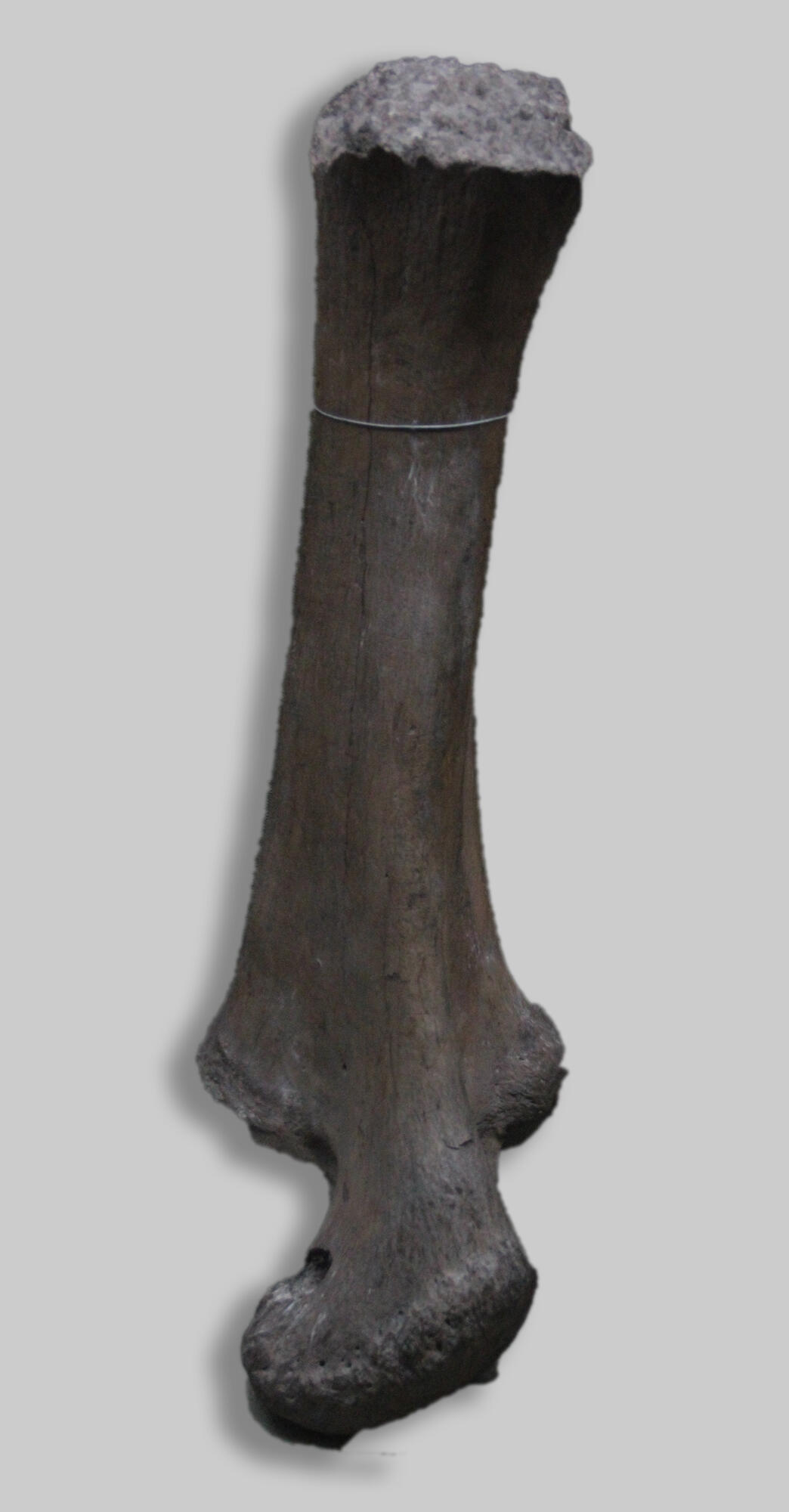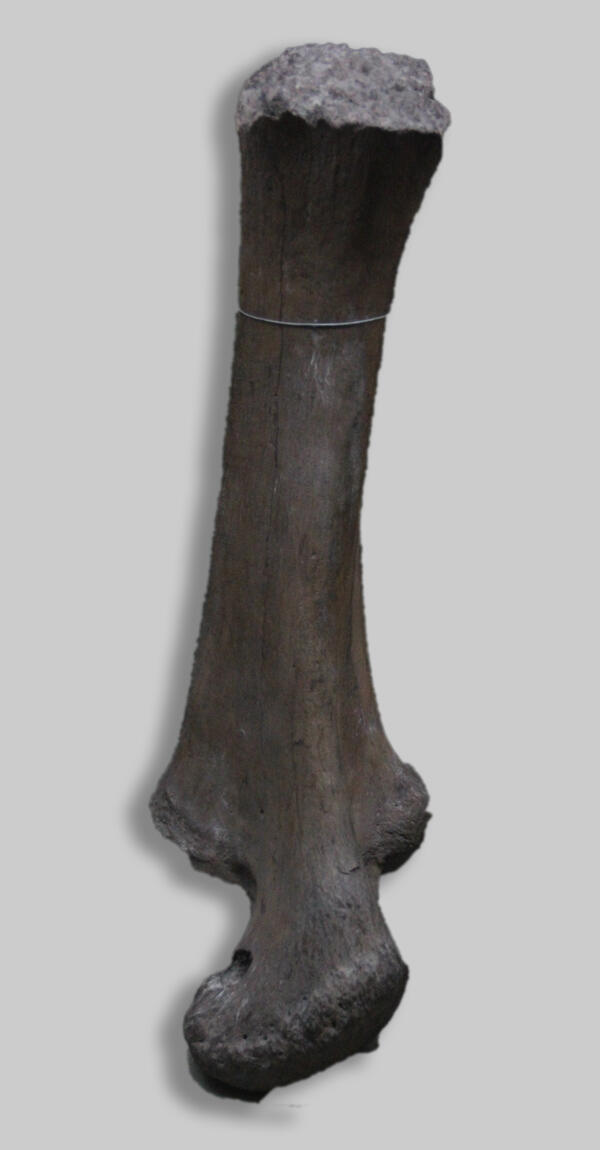The bone on display belonged to a mammalian, family: ElephantIdae. Mammoths reached a height of 5.5 meters and a body weight of 14–15 metric tons. This means that they were twice as heavy as the largest modern land mammals.
The oldest mammoth species appeared between 4 and 2.6 million years ago in Africa. Late species became extinct about 11,000 years ago. Relict populations, on the Arctic islands inaccessible to humans, still lived 4,000 years ago. This bone dates back to the second millennium BC. Thus, we can conclude that it belonged to one of the few remaining individuals of this time.
The skeletal structure of the woolly mammoth bears significant resemblance to the modern Indian elephant. The mammoth was somewhat larger than this elephant and reached 5.5 meters in length and 3.1 meters in height. The huge mammoth tusks, up four 4 meters long and weighing up to 100 kilos, were located in the upper jaw. They protruded forward, bent upward and converged in the middle. But despite all the similarities between elephants and mammoths, the latter became extinct.
Currently, there are two main hypotheses for the extinction of mammoths. According to the first one, hunters of the Upper Paleolithic played a significant or even decisive role in this. The second one explains the extinction of mammoths to a greater extent by natural causes: a brisk warming about 10,000 to 12,000 years ago and the disappearance of the mammoths' food.
The first hypothesis was made in the 19th century by Alfred Wallace, when ancient human dwelling sites with large accumulations of mammoth bones were discovered. At the Yanskaya prehistoric site, the Lugovsky site and the Sungir site, a series of mammoth bones — scapulae and vertebrae — were found with primitive spearheads stuck in them.
The supporters of the second hypothesis believe that human influence is greatly overestimated. In particular, they point out a ten-thousand-year period during which the population of mammoths grew five to ten times, as well as the fact that the process of extinction of the species began even before the appearance of people in the corresponding territories. Moreover, many other species of animals, including small ones, died out along with mammoths.
Mammoths in southern Siberia existed side by side with ancient people for 12,000 years. Therefore, in the second hypothesis, human interference has a secondary role, and the primary factors are natural changes in climate, food supply for animals and grazing areas.
The oldest mammoth species appeared between 4 and 2.6 million years ago in Africa. Late species became extinct about 11,000 years ago. Relict populations, on the Arctic islands inaccessible to humans, still lived 4,000 years ago. This bone dates back to the second millennium BC. Thus, we can conclude that it belonged to one of the few remaining individuals of this time.
The skeletal structure of the woolly mammoth bears significant resemblance to the modern Indian elephant. The mammoth was somewhat larger than this elephant and reached 5.5 meters in length and 3.1 meters in height. The huge mammoth tusks, up four 4 meters long and weighing up to 100 kilos, were located in the upper jaw. They protruded forward, bent upward and converged in the middle. But despite all the similarities between elephants and mammoths, the latter became extinct.
Currently, there are two main hypotheses for the extinction of mammoths. According to the first one, hunters of the Upper Paleolithic played a significant or even decisive role in this. The second one explains the extinction of mammoths to a greater extent by natural causes: a brisk warming about 10,000 to 12,000 years ago and the disappearance of the mammoths' food.
The first hypothesis was made in the 19th century by Alfred Wallace, when ancient human dwelling sites with large accumulations of mammoth bones were discovered. At the Yanskaya prehistoric site, the Lugovsky site and the Sungir site, a series of mammoth bones — scapulae and vertebrae — were found with primitive spearheads stuck in them.
The supporters of the second hypothesis believe that human influence is greatly overestimated. In particular, they point out a ten-thousand-year period during which the population of mammoths grew five to ten times, as well as the fact that the process of extinction of the species began even before the appearance of people in the corresponding territories. Moreover, many other species of animals, including small ones, died out along with mammoths.
Mammoths in southern Siberia existed side by side with ancient people for 12,000 years. Therefore, in the second hypothesis, human interference has a secondary role, and the primary factors are natural changes in climate, food supply for animals and grazing areas.


